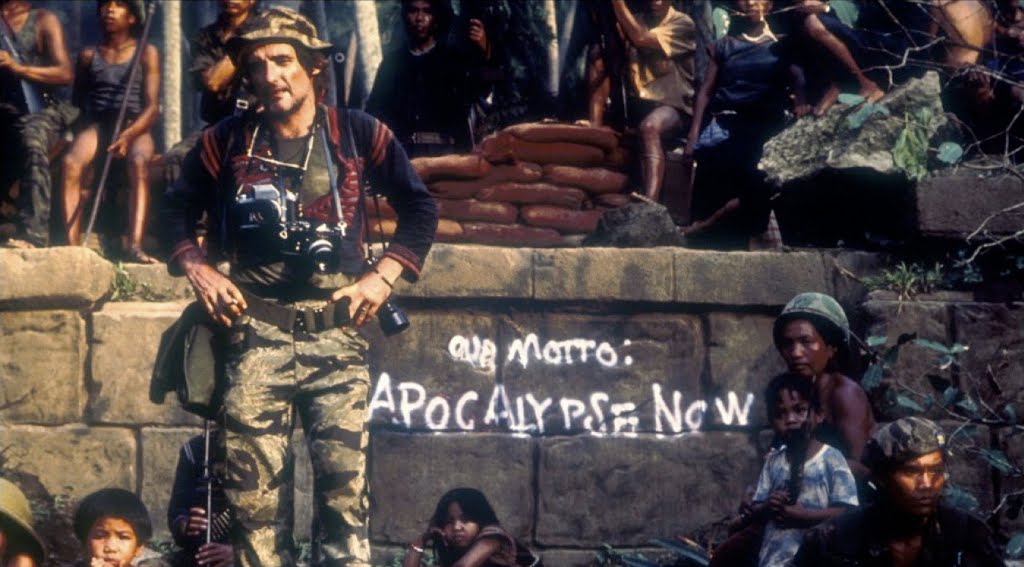I can't imagine what it must have been like to have been in that first audience , if indeed it did actually play before the fest was cancelled. Horror films are a rarity on the croisette (how killer would it be if a straight-up fright film took home the Palme one of these days?) and to have something this frightening staring you down must have been a bolt from the blue. From the sun-dappled credit sequence to that bravura shot of the men wandering through tall grass picking up where Onibaba left us, it's clear to me that Kuroneko was always going to be the film that walked off with the top prize....but it didn't. Nothing did. Now we can only guess. Admittedly I have a history with the film and have loved it a long time, but even turning that off as best as possible, no other film that year was as interested in scraping the outer reaches of the medium to let new light in. No other film takes half the risks of form and style. The video below presents some of the film's opening act with no comment, sound effects or dialogue. Look how beautifully it communicates its story through style. Look at the way Shindo masters the environment, how effortlessly he talks to you, spinning narrative like a spider does its web.
Kuroneko is a film told in several presentationally disparate acts. A horrific, silent opening gives way to an overly friendly dialogue enshrouded in mysterious scenery which leads to a grisly, abrupt end. This rhythm repeats itself until we're comfortable with it then suddenly we're miles away on a newly-dead but still angry battlefield. War has come down to two men fighting tooth and nail among piles of corpses. This shifts again soon. Shindo allows only time enough to think we know what happens next before yanking the rug out from under us with a plot device, sound effect, or unforgettably jarring image. Then he keeps going. Kuroneko is the film in the '68 lineup that breaks the most ground in its fusion of overt theatricality and cinematic possibility. The effects feel like paeans to silent cinema and certainly the state it leaves you in is much closer to the realm of Häxan or Nerves than Night of the Living Dead or The Haunting. Nothing here seems all that difficult to achieve, but who would think to reach in this direction. Nobuhiko Ôbayashi's Hausu would later pull off a similar trick, but had a little more help from modern editing advancements and it also doesn't ask you to suspend disbelief. Kuroneko is only able to get away with murder because of the immediacy of its direction, script and editing. It demands that you keep up, only to blindside you with invention or slowly envelope you in a miasma of impending terror.
I believe this to be Shindo's answer to Mizoguchi's much loved (by myself among Many others) Ugetsu Monogotari. In that film, based on a couple of old folk tales, two men leave their spouses behind to go to war and come home as heroes only to find their wives haven't fared half as well. Ugetsu isn't what you'd call a horror film and indeed any of the reverence it's inspired among cineastes is because of its lyrical direction not because it snuck a ghost story into an Oscar-nominated period piece. Ugetsu is a great, great movie and as with all late-period Mizoguchi there is an invisible efficiency to its harsh storytelling, but Kuroneko, on the other side of the genre, works harder to earn your respect. Shindo was a lover of Mizoguchi's films, as evinced by his documentary about the director's life included on the special edition Ugetsu DVD from Criterion. Kuroneko, which like Ugetsu is based loosely on a folk tale, can be seen as both a rebuttal and tribute to the earlier work. The story elements are the same, indeed everything down to the make-up over the eyebrows of its female leads seems culled from Ugetsu. He takes the eerie beauty of that film and retrofits it as horror, with textures turning from ominous but gentle mist to brittle, spun glass. Sympathy and a second chance aren't out of the question for Mizoguchi's heroes; Shindo was much less romantic.
The genius of Onibaba is that its horror lay in manipulating the real world, in the things that people are capable of doing to each other (and of course that mask). It's quite a pleasant surprise to learn that Shindo was equally at home dealing with the supernatural and/or the totally unnatural. But of course the story's foundation is in the horror of human nature. Though it's only one of many, one of the more terrifying images in the movie is of that first scene of the marauding soldiers filing out of the woods, coming to take what isn't theirs. The men are noiseless (like so much in Shindo's cinema) and without so much as a warning shot end two lives and ruin another. The unstoppable randomness of violence is something we all fear in some way or another and nothing drives this home more than the opening of Kuroneko. Shindo proves himself a filmmaker with an incredible grip on human nature and proves himself a humanist and a realist, even as he spins a truly fantastic, unspeakably dreadful yarn.













